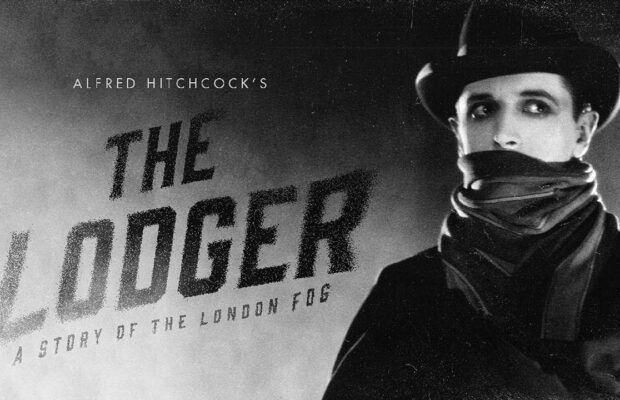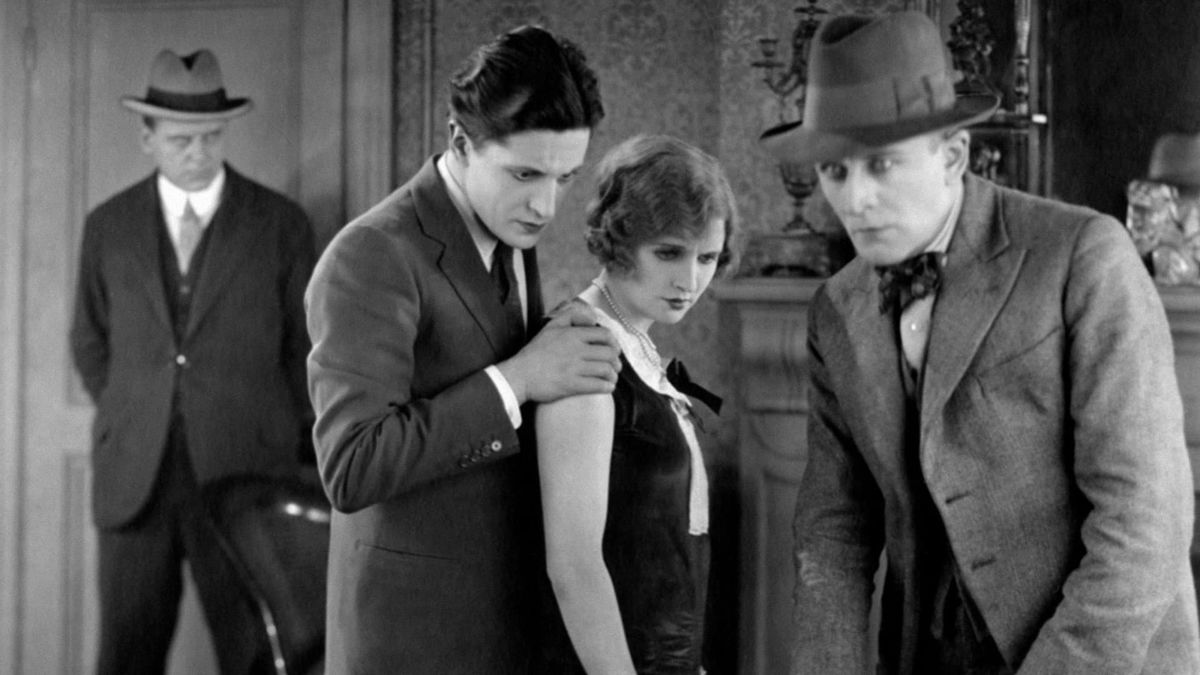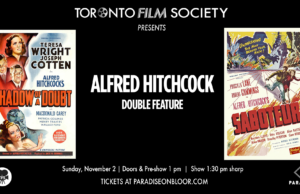The Lodger: A Story of the London Fog (1927)

Toronto Film Society presented The Lodger: A Story of the London Fog (19327) on Friday, September 26, 2025 as part of the Season 78 Virtual Film Buffs Screening Series, Programme 1.
Production Company: Gainsborough Pictures. Produced by: Michael Balcon, Carlyle Blackwell. Directed by: Alfred Hitchcock. Screenplay by: Eliot Stannard, based on the novel The Lodger: A Story of the London Fog by Marie Belloc Lowndes. Cinematography: Gaetano di Ventimiglia. Art Direction: C. Wilfred Arnold. Music: Originally silent with live accompaniment; later versions feature composed scores. Running time: Approximately 90 minutes (varies by version).
Cast: Ivor Novello (Jonathan Drew, “The Lodger”), Marie Ault (Mrs. Bunting), Arthur Chesney (Mr. Bunting), Malcolm Keen (Detective Joe Chandler), June Tripp (Daisy Bunting).

Born in 1899 in London, England, Sir Alfred Joseph Hitchcock is famously known as the Master of Suspense; he directed more than fifty feature films over a sixty-year directorial career. Hitchcock’s first three films were German-British productions, two of which have been lost; the third one maybe should have been… The Pleasure Garden (1925) was not well-liked. In the October 31, 1926 edition of The Film Daily, the headline for the review of this film was: “SEX PICTURE WHOLLY UNSUITABLE FOR THE EXHIBITOR WHO AIMS TO SHOW GOOD CLEAN ENTERTAINMENT. ABSOLUTELY TABOO FOR CHILDREN.” Literally, the headline was all in capitals. The review went on to describe The Pleasure Garden as “…essentially a sex exhibit. It has no place on the screens of exhibitors catering to a discriminating American public. Certainly it cannot be offered for family consumption and should be positively barred from juvenile audiences.”
Well, fourth time is the charm. The Lodger was Hitchcock’s fourth film, his first fully British production, and his first commercial and critical success. It’s also notable as the first time Hitchcock appeared in a cameo role due to an actor failing to appear on set that day, so Hitchcock filled in. The cameo role became his standard practice and a signature part of each of his films. We won’t spoil it for you, but Hitchcock is in this film – look carefully and you’ll see him.
Historians credit Hitchcock’s use of light and shadow and unusual film angles from techniques picked up during his time working with German director, F. W. Murnau (Nosferatu, Faust, Sunrise: A Song of Two Humans). Watch for the innovative use of a glass floor and the unusual filming of the staircase which foreshadows some of Hitchcock’s future films, like Psycho and Vertigo. Keep an eye open for some religious symbolism (not unusual for the audiences of the time) — a shadow cast across the lodger’s face hinting at his innocence in the face of persecution, and the fainting lodger laying prone, like in the death of Christ or La Pietà. In an interview, Hitchcock was asked if his evocation of Christ was deliberate. The product of his Catholic upbringing, Hitchcock wryly replies “Naturally, that thought did occur to me.”
Critics and film historians also note that The Lodger was the earliest example of Hitchcock’s fascination with blonde women, especially when someone is murdering them. Oh, those golden curls! In The Lodger, fair hair becomes a symbol of both innocence and desire; for filmmaking, blonde hair easily accentuates the contrast between light and dark, virtue and menace. Later in his films, Hitchcock would cultivate the Icy Blonde heroine – cool, elegant, seemingly reserved, but with underlying passion or danger. He would contrast their cool composure with moments of vulnerability, suspense and violence. His very favourite icy blonde was Grace Kelly (Rear Window, To Catch a Thief), but there was also Janet Leigh (Psycho), Kim Novak (Vertigo), Eva Marie Saint (North by Northwest), and Tippi Hedren (The Birds, Marnie). All fabulous actress and films.
Angus MacPhail, a screenwriter who worked with Hitchcock, is credited with coining the phrase “MacGuffin”, but it was Hitchcock who popularized the plot device.
“MacGuffin: an element in a work of fiction that drives the plot and motivates the characters despite being relatively insignificant to the story. A story’s MacGuffin can take the form of an object, event, or character.” [Encyclopedia Britannica]
Other famous, non-Hitchcock ‘MacGuffins’ include: a briefcase with unknown content (Pulp Fiction), Rosebud (Citizen Kane), and pretty much any treasure in the Indiana Jones franchises. It’s argued that The Lodger doesn’t have a MacGuffin; we disagree. Is there a MacGuffin in The Lodger or maybe more than one? If so, who or what is the MacGuffin? Discuss!
The Lodger starred June Tripp, a British stage and silent film actress often just credited by her stage name “June.” Her role is “Daisy, a mannequin” or what we would now refer to as a fashion model. The big star of the film was Ivor Novello, a famous Welsh entertainer, composer, singer, actor and a very popular matinee idol. As a composer, Ivor is most well-known for the patriotic WWI song “Keep the Home Fires Burning” (1914). A beautiful rendition of this song by The D-Day Darlings is available on YouTube.
In 1927, Ivor starred in two of Hitchcock films, The Lodger and Downhill, a British drama co-written by Ivor about the misadventures of a young man after he gets expelled from boarding school. The film wasn’t well received, though Hitchcock was credited for his superior directing in an otherwise not so great film. It can be speculated that Hitchcock agreed to direct Ivor’s screenplay in return for Ivor’s role in The Lodger. The original script of The Lodger made Ivor’s character much more sinister: was he the killer or not? As a popular (albeit closeted gay) matinee idol, such a role would not do with his female fans (nor Ivor’s career, shouted his agent)! The script was re-worked to remove any ambiguity and to make Ivor out as a victim at the end, but sometimes a script will sneak out the truth: Joe the detective says, “Anyway, I’m glad he’s not keen on the girls.” Moviegoers had no idea what that meant, but certainly the cast and crew did.
The Lodger is based on a horror novel by Marie Belloc Lowndes published in 1911 and considered to be one of the first novelizations of the Jack the Ripper genre. In addition to the serial murders of Jack the Ripper, Lowndes was also inspired by the Lambeth Poisoner, a Canadian medical doctor and serial killer who poisoned his victims with strychnine. The good doctor murdered up to ten people, usually low-class women, prostitutes and the like. Dr. Thomas Neill Cream was convicted and hung in 1892; his hangman claims that Cream’s last words were “I am Jack the…” (snap!). There’s no way to verify the truth of this claim, but it certainly made a great story at the pub.
The story of Jack the Ripper has since been adapted to film a number of times. The 1979 film Murder by Decree starred a mostly Canadian cast, including Christopher Plummer, Genevieve Bujold, Susan Clark, and Donald Sutherland. The 2009 film, The Lodger, was directed and co-written by Montreal-born, David Ondaatje, nephew of author Michael Ondaatje (The English Patient) and son of businessman and philanthropist Christopher Ondaatje.
Notes by Carol Whittaker and Bruce Whittaker

Sunday Afternoons at the Paradise
Join TFS for Season 78’s Sunday Matinée Series generously sponsored by our good friend, author and documentary filmmaker, Mr. Don Hutchison. Please save these dates and visit us regularly...







